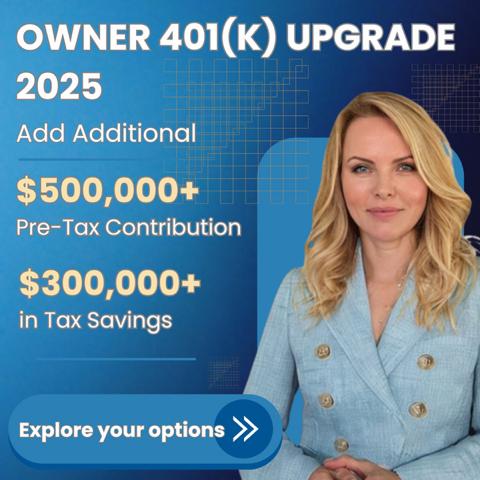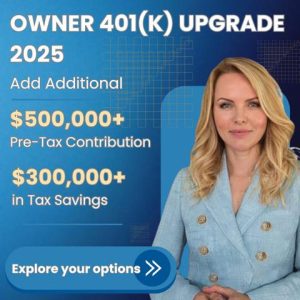Before you send another dollar to the IRS, verify it.
This year one of our clients will save over $300,000 in taxes.
Not by opening offshore accounts.
Not by inventing deductions.
Just by rearranging what was already allowed under the tax code.
On top of those tax savings, his $500,000+ contribution into a qualified retirement plan arrangement—rather than vanishing into the IRS—can earn ~4–8% long-term annualized returns, creditor-protected, compounding, and available for his own retirement.
It makes you wonder how many people are overpaying taxes simply because they don’t know better options exist.
Most Business Owners Think They’re Maxed Out—They’re Not
Ask ten business owners how they save on taxes, and nine will say something like:
“We’ve got a 401(k). We added Safe Harbor, maybe Profit Sharing, and we match a few percent. We’re all set.”
That’s reasonable if you’re not dealing with high-earner tax math.
But for professionals, doctors, lawyers, and business owners earning real money—six, seven, or even eight figures—the standard 401(k) is a polite gesture. You get to defer around $69,000. Helpful, but it doesn’t move a needle on a $400,000 tax bill.
Meanwhile, the same tax code that limits your 401(k) also contains a different set of rules that can move hundreds of thousands of dollars per year, legally, into protected retirement savings.
Most people simply never read that far into the rulebook.
The Structure Few People Know About
We design custom, high-efficiency, multi-layered retirement plans that synchronize business cash flow and tax planning into one data-driven system—redirecting taxable income into creditor-protected, tax-deferred, compounding retirement assets.
They’re built for high earners who want to accelerate retirement asset accumulation and finally get real tax relief. These plans are fully compliant, entirely domestic, and boring enough to be blessed by the IRS. The numbers aren’t boring:
Recent client example
Total contributions: ~$500,000
Owners keep: ~97% ($485,000)
Employees receive: ~3% ($15,000) — enough to pass compliance testing
Client’s tax savings: ~$333,000 per year
Because every dollar is tax-deductible, the tax savings alone often offset what the plan costs to fund.
A Feature, Not a Loophole
This isn’t a trick. It’s a trade-off the IRS intentionally offers:
“Help your employees save for retirement, and we’ll let you save a lot more for yourself.”
Large corporations have used this framework for decades. Now smaller professional firms can access the same efficiency. No secrecy. No risk. Just better arithmetic.
See What It Means for You
Average annual tax savings: $200k–$500k+
Legal basis: written directly into the IRS code
Ideal for: business owners, lawyers, doctors, and professional firms with consistent profits
If you’ve been told you’re “maxed out,” you probably aren’t. Before you send another dollar to the IRS, verify it. We’ll calculate your true contribution capacity and tax savings at no cost.
Free, no obligation — we’ll show you:
Your maximum owner contributions this year
The exact federal tax savings at your bracket
The required employee cost (and your net after tax)
What we need: 20 minutes of your attention and a few basic documents.
Result: a realistic projection that often uncovers hundreds of thousands of dollars in annual tax savings, redirected into creditor-protected, tax-deferred, compounding retirement assets.
Schedule a call: https://calendly.com/palmbeachpwm/introductory-call
About the Author
Elena Samofalova – Retirement Plan Advisor | Investment Advisor | Chartered Retirement Planning Counselor (CRPC®)
CEO, Palm Beach Private Wealth Management
Web: www.palmbeachpwm.com
Email: elena@palmbeachpwm.com
Phone/text: (954)400-3038
Disclosure
Figures are illustrative and depend on plan design and demographics. Creditor protection varies by plan type and jurisdiction. Qualified plans must satisfy applicable coverage and nondiscrimination rules. This information is educational and not tax or legal advice; consult your advisor for your circumstances. The 4–8% range is a planning assumption based on diversified market portfolios; it is not guaranteed. Actual results vary year to year and loss is possible.












